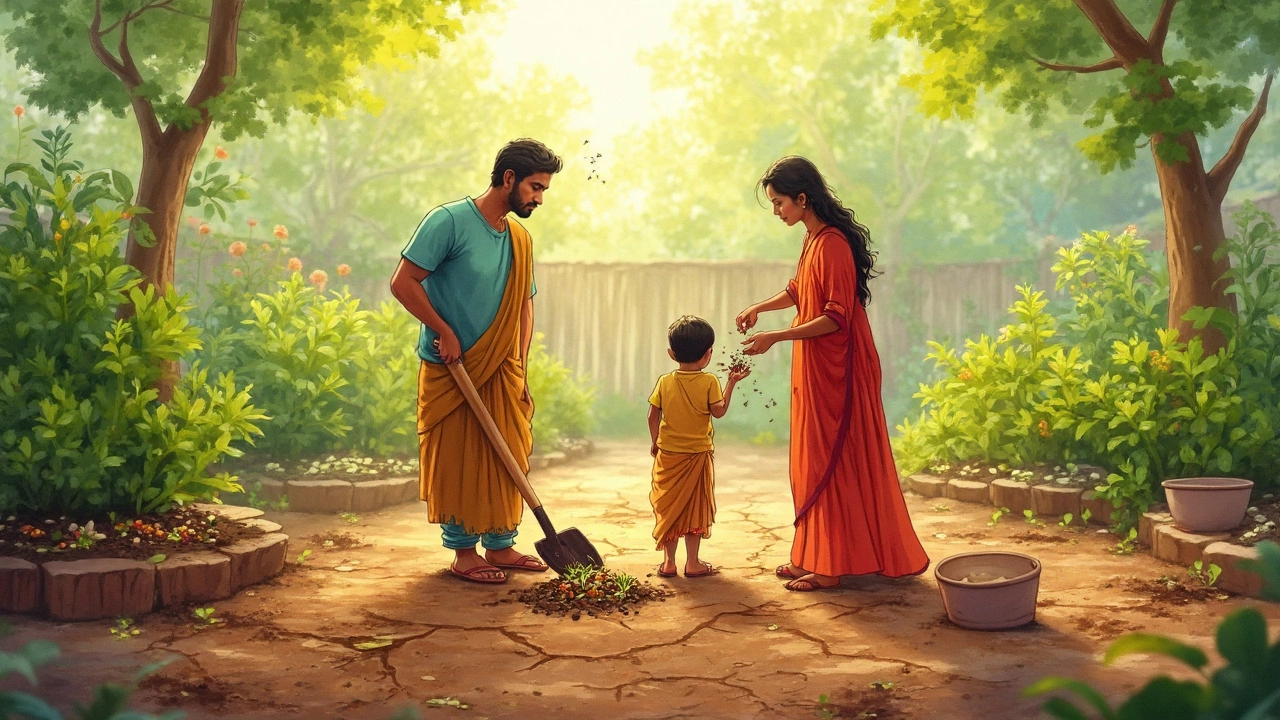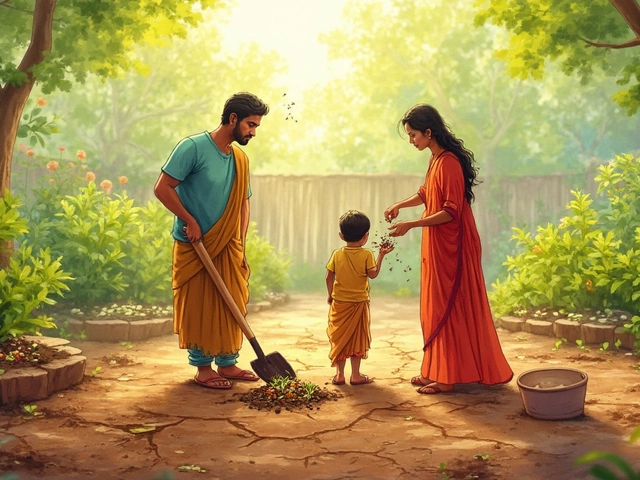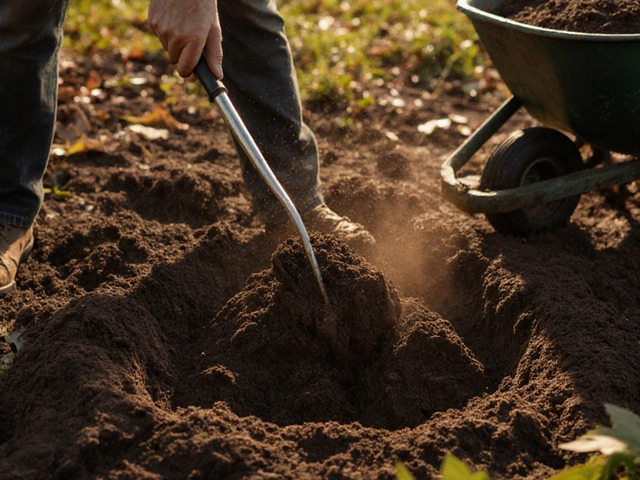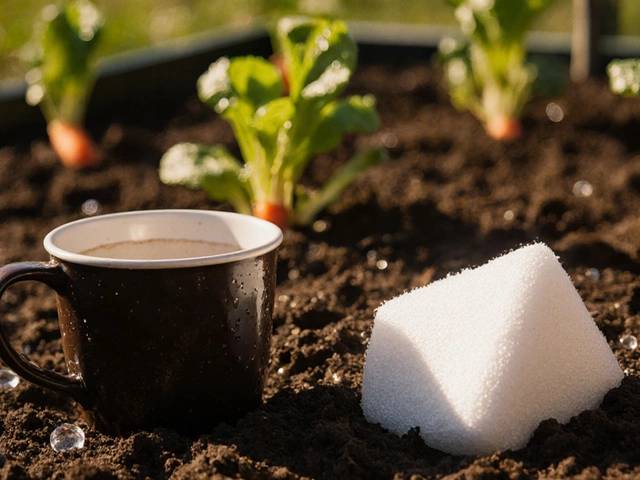You know that heartbreak when your plants just refuse to grow, no matter how much you water? If you’re here, odds are your soil is the real culprit. Bad soil usually means poor drainage, hardly any nutrients, or just the wrong kind of dirt for your plants. The good news? You don’t need a science degree or fancy tools to fix it—you just need a good plan.
First, forget about blaming yourself. Most yards, especially in new developments, start off with junk dirt dumped by the builder. It’s normal to find rock-hard clay, gritty sand, or even soil that looks and feels more like dust. The trick is knowing what’s actually wrong with your ground so you can tackle it head-on. A quick soil test kit (the cheap ones at garden centers do the trick) shows you how acidic or packed with nutrients your patch is. Once you know this, picking solutions gets so much easier—and you can skip the guesswork.
- Spotting Bad Garden Soil
- Why Soil Quality Matters
- Quick Fixes You Can Do Right Now
- Long-Term Improvements for Healthy Soil
- What to Avoid When Fixing Garden Soil
Spotting Bad Garden Soil
Before you go wild with shovels and bags of compost, it helps to know if you really have bad soil and what kind you’re dealing with. There are a few signs that scream "help needed": stunted plants, yellowing leaves, puddles that stick around after rain, and soil that’s hard as a rock or powdery like flour. If you dig a hole and the water just sits there, your ground might be packed clay. If water rushes through like a sieve, you probably have sandy dirt.
Try the squeeze test. Grab a handful of damp soil and squeeze. If it crumbles instantly, you’ve got sandy soil. If it sticks together and feels sticky, hello clay. Good soil—called loam—should stick together a bit but fall apart when you poke it. Plants love loam because it drains well but holds enough moisture.
Look at what’s growing in your yard, too. Lots of moss means soggy, acidic conditions. If you only see weeds or hardly any green, your soil might lack nutrients or just be too compact for roots to spread.
Don’t forget the nose test. Healthy soil smells a little earthy, kinda sweet—not like metal or rot. If it smells sour or just gross, something’s off, often from drainage issues or too much organic stuff breaking down without air.
- If your veggies stay tiny and leaves look pale, that’s often a sign of nutrient-poor soil.
- Pools of standing water after a rain? Poor drainage or clay soil.
- Tons of weeds can mean your good stuff is choked out, or that seeds are taking over because the soil is bare and weak.
If you want to be sure, grab a cheap soil test kit. It takes five minutes and tells you the basics: pH level, how much nitrogen, phosphorus, and potassium are in your soil. These are the things plants use to grow, and if they’re missing, your garden will feel it.
Why Soil Quality Matters
If you ever wonder why some gardens just explode with life while others stay stubbornly dull, it almost always comes down to the stuff under your feet. Healthy soil is like the foundation of a house. It handles everything: feeding plants, holding water, and giving roots room to breathe. When your soil’s bad, it won’t matter how much you water or fertilize—your plants just won’t thrive.
Here’s what’s happening in good versus bad soil. Good soil holds the right amount of water without turning into a swamp or a desert. Roots need both air and water, so when soil is compacted or full of junk like rocks or clay, roots suffocate and plants struggle. Living things in soil, like worms and tiny bacteria, break down dead stuff and release nutrients your plants need. You want those guys, and they only hang out in healthy, well-fed soil.
Bad soil can mean all sorts of headaches, not just slow growth. Your flowers may droop or go yellow even when there’s plenty of rain. Veggies turn out small and tasteless because they’re just not getting the good stuff out of the dirt. Plus, if your soil won’t drain well or dries up too fast, you’re stuck hand-watering or fighting off root rot.
Just check out this quick comparison of good soil vs. bad soil features:
| Feature | Good Garden Soil | Bad Garden Soil |
|---|---|---|
| Drainage | Drains evenly | Pools water or bone dry |
| Nutrients | Rich, easy for roots to use | Poor or easily washed away |
| Texture | Loose, crumbly | Hard clumps, or too sandy |
| Life | Full of worms, bugs | Barely any living creatures |
So it makes sense to tackle bad soil ASAP, because that’s the ticket to bigger flowers, juicier tomatoes, and a lot less time spent on damage control. Healthy soil means plants do more of the heavy lifting themselves—with way fewer headaches for you.
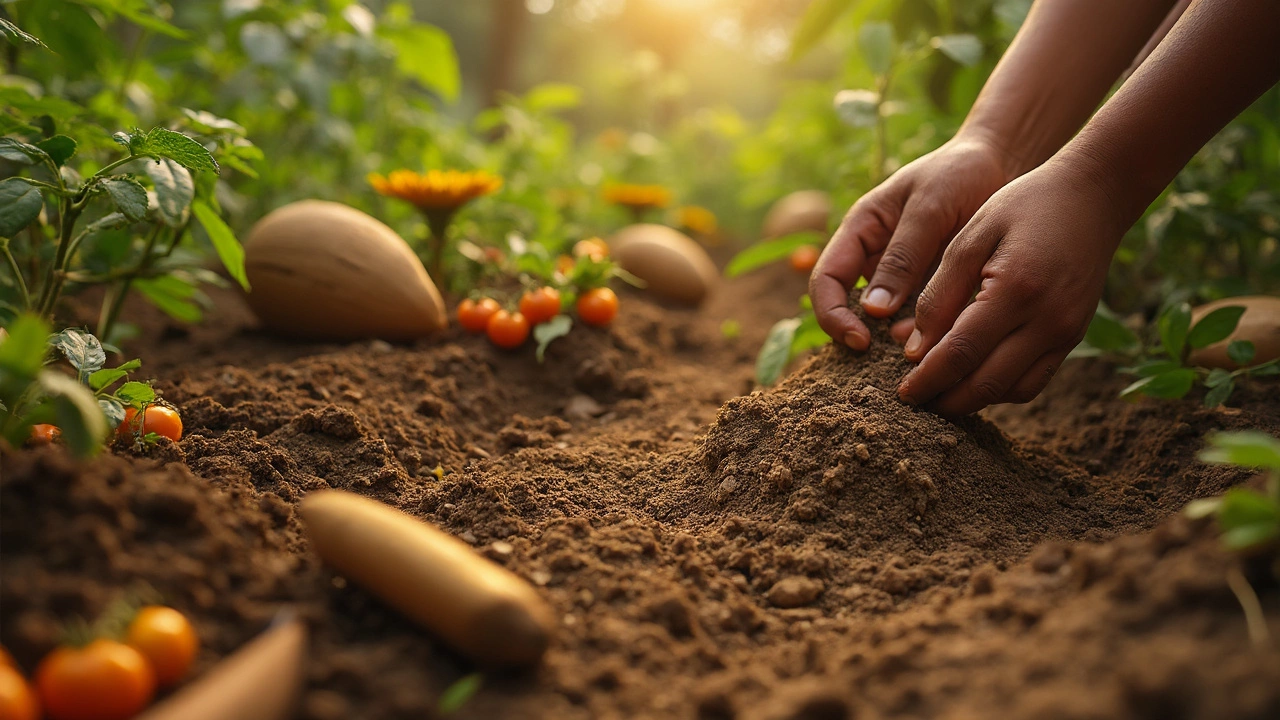
Quick Fixes You Can Do Right Now
If you want to see results fast, there are actually a few things you can do today to improve your garden soil. These won’t fix everything overnight, but you’ll give your plants a lot better odds than just sticking them into old, tired dirt.
- Compost to the rescue: Grab any kitchen scraps (banana peels, coffee grounds, veggie bits—just skip meat or dairy) and sprinkle them right onto your soil, then gently work them in with a shovel or hand rake. Compost brings in both nutrients and helpful organisms your dirt desperately needs.
- Aerate stubborn clay: If your soil is heavy like modeling clay, poke deep holes with a garden fork or even a broom handle to let in air and water. Plants need oxygen around their roots just like we do.
- Bagged soil amendments: It’s not cheating to grab a bag of well-rotted manure, organic soil builder, or garden compost from the store. Spread a few inches on top, mix it in with the top 6 inches of your soil, and let the worms and rain do most of the work.
- Mulch like a pro: Laying down a layer of shredded leaves, straw, or bark mulch on top of your dirt helps keep moisture in and can stop weeds from stealing what little goodness your soil has left. Organic mulches will slowly rot, feeding the ground under them.
- Water smarter, not harder: Water deeply but not too often. Roots follow the water, so deep watering with a hose (rather than a sprinkle every day) trains roots to dive down, making them stronger and more drought-tough.
If you want a quick and simple reference, here’s how store-bought amendments can help with the most common bad soil types:
| Soil Problem | Quick Fix |
|---|---|
| Clay (heavy, sticky) | Mix in compost, coarse sand, leaf mold |
| Sand (drains too fast) | Add compost, coconut coir, peat moss |
| Acidic soil (pH low) | Sprinkle a little garden lime (read label) |
| Alkaline soil (pH high) | Mix in elemental sulfur or pine needles |
Don't overthink it! These small steps make more of a difference than most people realize, and you’ll start to notice easier digging and healthier roots in just a few weeks.
Long-Term Improvements for Healthy Soil
If you want your plants to thrive year after year, you gotta play the long game. It’s not just about what you throw in this season—it’s about building a strong base that keeps giving back. The backbone of lasting fixes is adding organic matter. Compost is gold for gardens. Even a small amount mixed into your soil every year can totally change crumbly sand or hard clay into rich, plant-friendly ground. Try spreading 2-3 inches of compost over your beds each spring or fall and gently work it into the top few inches with a rake or your hands. If you’ve got compost from kitchen scraps, coffee grounds, or yard waste—use it. Store-bought works too.
For tough clay, gypsum can actually help break it up. You won’t notice change overnight, but over a couple years, it’ll feel less like you’re digging into bricks. If you’re working with sandy soil, leaning heavy on organic matter is key since sand just can’t hold nutrients or water for long.
Another easy win is planting cover crops (also called “green manure”). These are plants like crimson clover or vetch that you grow just to dig back into the soil. They add nutrients, boost structure, and even help keep weeds down. Mix them in at the end of each season and let nature do most of the work.
Don’t forget mulch. A layer of straw, shredded leaves, or bark chips locks in moisture and protects roots from wild temperature swings. Mulch slowly breaks down and feeds your soil, too.
Here’s a handy breakdown of what each fix does long-term:
| Improvement | What It Does | How Often |
|---|---|---|
| Add compost | Boosts nutrients and structure | Once or twice a year |
| Use gypsum (for clay) | Improves texture and drainage | Every 1-2 years |
| Plant cover crops | Adds organic matter, reduces weeds | After each growing season |
| Apply mulch | Locks in moisture, prevents erosion | Spring and fall |
Focus on these steps and your garden soil improvement efforts start to pay off every season. The best part? Great soil means less work in the long run—less weeding, less watering, and way better harvests. You'll notice your flowers, tomatoes, or whatever you plant just look happier year after year.
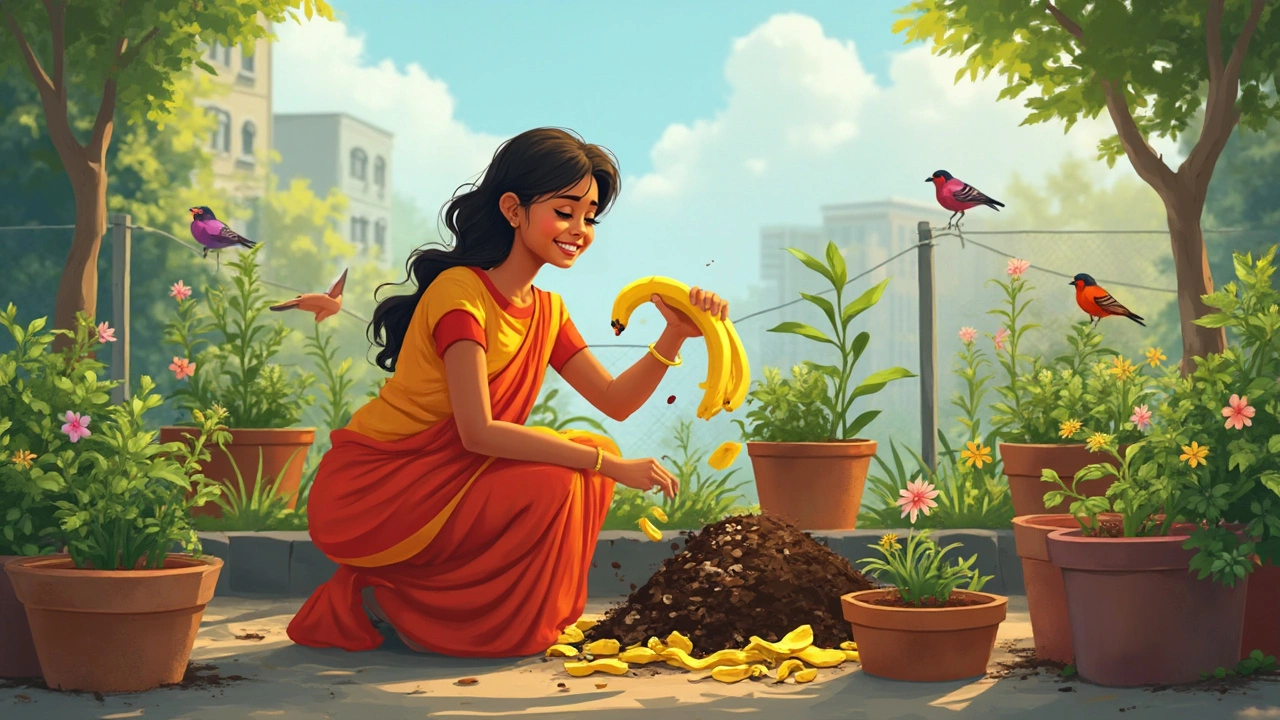
What to Avoid When Fixing Garden Soil
When you’re dealing with bad soil, it’s easy to get tempted by shortcuts or old-school fixes from the internet. But not every tip you hear is a good idea. Some moves can actually make your soil worse or mess up your garden for years. Here’s what you should skip if you want real results.
- Don't just add sand to clay soil. Mixing sand with heavy clay might sound like a quick fix for drainage, but it usually turns your dirt into something like concrete—impossible for roots to grow in. Real talk: if your soil is already compacted, stick to adding compost or well-rotted manure instead.
- Avoid using fresh manure straight on your beds. While manure is full of nutrients, fresh stuff can burn plant roots, spread weeds, or even introduce bacteria that’s bad for your veggies. Always compost manure before working it in.
- Skip chemical fertilizers as your first solution. They might green things up for a season, but they don’t improve your soil long-term. Too much can mess with the balance of your garden’s ecosystem and kill off the good worms and microbes you actually want.
- Don’t till or dig when the soil is soaking wet. Turning wet dirt can cause clumps, destroy soil structure, and lead to more compaction. If you leave footprints that fill with water, wait until things dry out before doing any big work.
- Steer clear of adding wood chips or sawdust directly where you plant. These materials suck up nitrogen from the ground as they break down, leaving your plants hungry and stunted. Wood chips work great for paths or as mulch between rows, but don’t dig them in unless they’re already aged.
The statistics on soil health prove it’s worth being patient and smart. For example, a study by Colorado State University found that using composted organic matter increased crop yield by 15-30%, but people who relied on just synthetic fertilizer saw no change in overall soil quality after three years.
Remember, the goal isn’t a quick fix but soil that stays healthy season after season. If you’re unsure about adding something, check with your local garden center or extension agent. It’s way easier to prevent a mistake than to fix one later.
